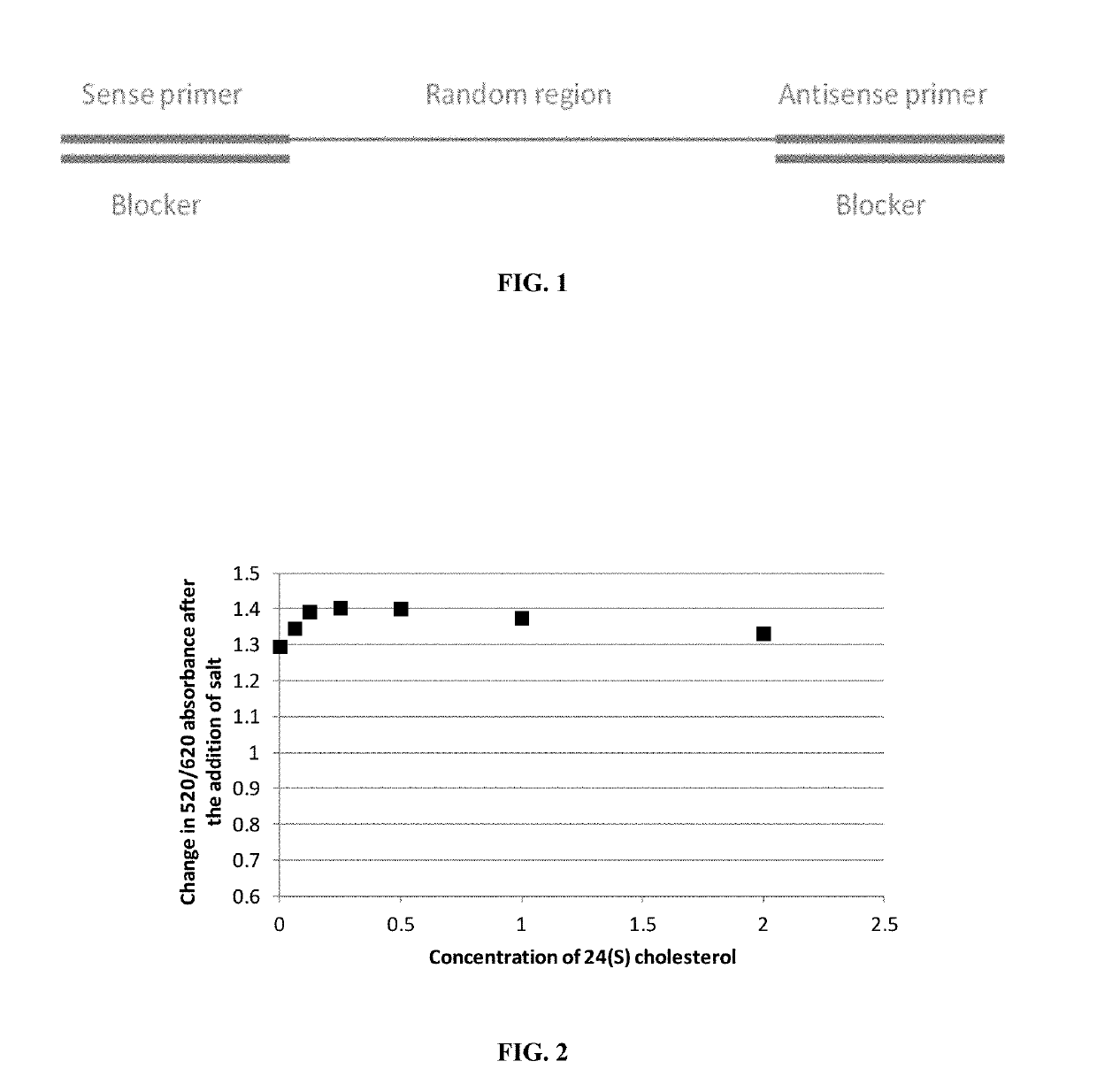Method for the selection of aptamers for unbound targets
a technology of unbound targets and aptamers, applied in the field of selection of aptamers, can solve the problems of limited use of target analytes, inadequacies of aptamers for small molecules, and limited use of nitrocellulose as a means, and achieve the effect of keeping the complexity of the library quite high
- Summary
- Abstract
- Description
- Claims
- Application Information
AI Technical Summary
Benefits of technology
Problems solved by technology
Method used
Image
Examples
example 1
24(S) Cholesterol
[0121]The method according to the present invention was applied for the selection of aptamers binding to the molecule 24(S) cholesterol (CAS number 474-73-7).
[0122]Selection was performed for 10 selection rounds, using a completely random selection library. The oligonucleotides of the selection library (about 105 oligos) contained a random region of 40 nucleotides. No counter-selection was performed. One indication that a selection was successful is the observation that the copy number of certain sequences increase over selection rounds. We analyzed a total of 6,559,573 sequences. The top twenty sequences in terms of copy number are listed below in Table 1 and referred herein as SEQ ID NOs: 3-23.
TABLE 1CopySEQ IDNameSequencenumberFrequency 3Chol-1TAGAGAAGGCAAGAAAAAGTGAAAGAGAAGTGAACCGAGT40226.13E−04 4Chol-2AAACAGGTAAGATAAAGGTAGTGAGTACCAGGACGCAAGG32213221E−04 5Chol-3GATTCGATCTGGATAAAGTGGAGTGACTGTGTATGTGTGA27292729E−04 6Chol-4CAAAACTAACGAATCACGATGCGCTCTGCGTAGTCTGAGC215...
PUM
| Property | Measurement | Unit |
|---|---|---|
| temperature | aaaaa | aaaaa |
| temperature | aaaaa | aaaaa |
| temperature | aaaaa | aaaaa |
Abstract
Description
Claims
Application Information
 Login to View More
Login to View More - R&D
- Intellectual Property
- Life Sciences
- Materials
- Tech Scout
- Unparalleled Data Quality
- Higher Quality Content
- 60% Fewer Hallucinations
Browse by: Latest US Patents, China's latest patents, Technical Efficacy Thesaurus, Application Domain, Technology Topic, Popular Technical Reports.
© 2025 PatSnap. All rights reserved.Legal|Privacy policy|Modern Slavery Act Transparency Statement|Sitemap|About US| Contact US: help@patsnap.com

